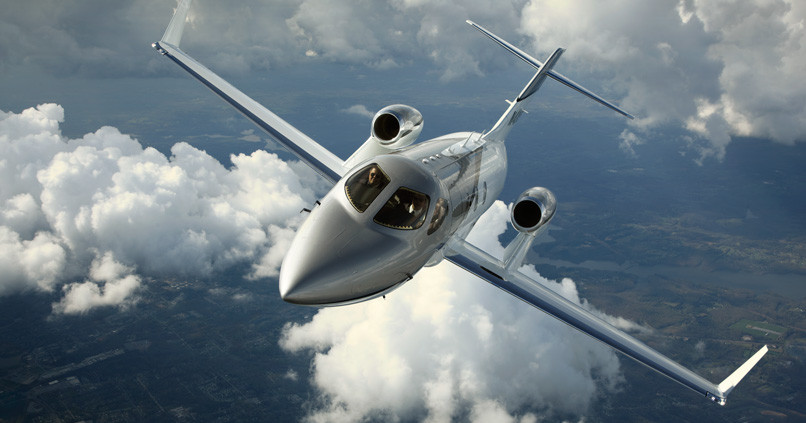The new HondaJet specs
Performance
Engines
derated from 2095 lbf each
Exterior Dimensions
Interior Dimensions
Baggage Space
Configuration
A global workforce.
An investment in a private jet is a substantial one. The Honda Aircraft Company, headquartered in Greensboro, North Carolina, USA, is a fully operational, state-of-the-art manufacturing facility and home of a global R&D center geared up to build the fastest, most fuel-efficient jets in their class. Honda Aircraft associates have assembled from more than 40 countries around the world to produce one of the most distinctive and advanced aircraft to ever take to the sky.
The progression of human mobility.
For more than 60 years, Honda has helped the human race move with more speed, economy, grace, and joy. The HondaJet is the epitome of continually improving human mobility. The commitment to flight by Honda — a globally recognized and respected company — is as steadfast as its dedication to its landbound endeavors.
Move the engine. Shift expectations.
A breakthrough in aeronautics, the Over-The-Wing Engine Mount was engineered and proven by Honda after more than 20 years of extensive research and development. This innovative technology not only breaks the conventional mold set by the aerospace industry, but also provides category-leading advancements such as a more spacious cabin, noise reduction, and increased fuel efficiency.
Natural Laminar Flow (NLF)
maximizes performance.
Advancements in aerodynamics and NLF technology were applied to the design of the main wing airfoil and fuselage nose shape of the HondaJet to reduce aerodynamic drag. This cutting-edge engineering innovation contributes to high cruising speed and increased fuel efficiency.
Lightweight structure,
heavyweight performance.
Unlike many jets that use aluminum, the HondaJet employs a lighter yet strong composite fuselage. The fuselage is created from a cutting-edge combination of co-cured integral structure and honeycomb sandwich structures.This results in increased cabin space, better performance, and greater fuel efficiency.
Advanced cockpit.
The HondaJet cockpit is built for optimum safety based on thoughtful ergonomic design and state-of-the-art situational awareness. First, we give the pilot more space and greater visibility; next, fewer intrusions and more intuition. Our Garmin® G3000 next-generation all-glass avionics system brings pilot and aircraft closer together with touch-screen technology. The dual touch-screen controllers and three 14-inch landscape high-resolution displays offer enhanced navigation, flight planning, and control. The cockpit is unquestionably built around the pilot to enable either single-pilot or dual-pilot operation of the HondaJet.



